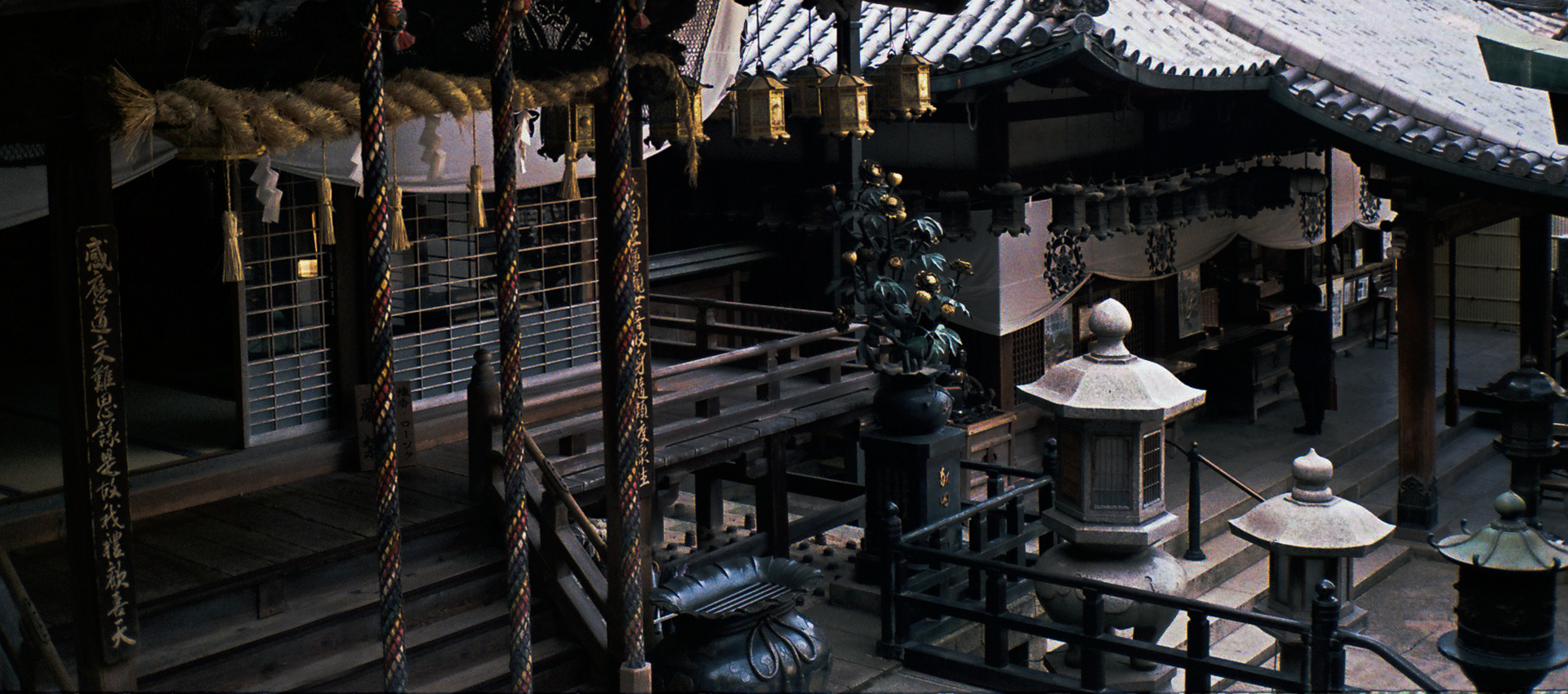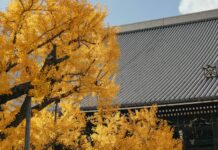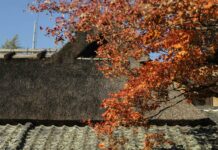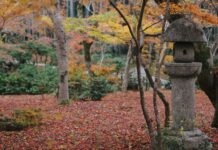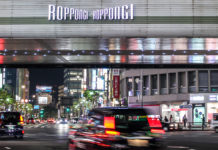Hozan-ji is in many ways the embodiment of a perfect Japanese experience, in miniature. The otherworldly mountain temple complex is largely unknown to foreign tourists and seldom crowded by local visitors outside of the spring/autumn peak seasons. If you feel like riding a dog-faced cable car up to a Crouching Tiger-esque mountain temple, hidden in a Studio Ghibli style village, head to Hozan-ji!

Hozan-ji: Ikoma’s Hidden Dragon.
Like many other sites in Japan, the sanctification of Mt. Ikoma occurred long before any actual Buddhist temples were built in the same location. In fact, before Hozan-ji temple was completed in the 1600s, Mt. Ikoma was used as a ‘training site’ for the ascetic practices of Buddhist monks. The practices would include physical training (climbing the mountain daily) and sitting isolated in nature (Zazen), among other things.
In true ‘hidden temple’ style, Hozan-ji is quite literally carved into the stone flank of Mt. Ikoma. From here, Ikoma village flows down from the temple in a cascade of gorgeous traditional houses and historical streets. Better yet, in the evenings the sparkling lights and narrow alleyways look almost like a scene from Studio Ghibli’s Spirited Away. Best of all, every year on or around September 23rd (Autumn Equinox), lanterns and candles illuminate the temple and surrounding village. If you can visit on this date, prepare to be transported through time to an entirely different world.
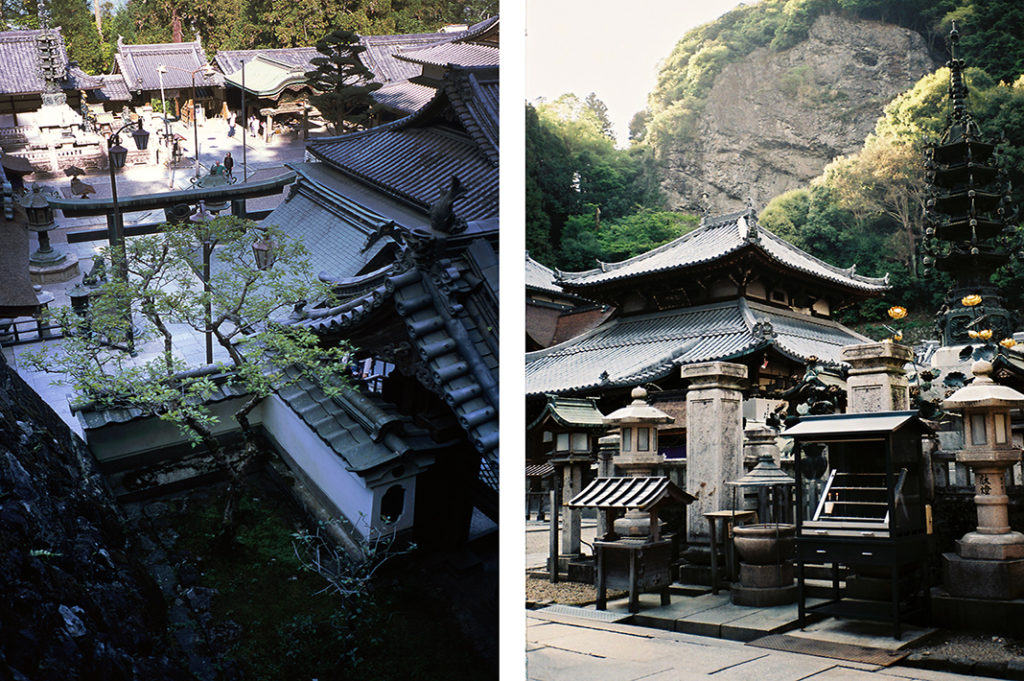
Praying for Wealth in the Mountain Temple.
Ikoma’s local population have long venerated the mountain as the dwelling of Kangiten, the god of wisdom and prosperity. Reportedly, Hozan-ji was a popular destination for merchant pilgrimages in the late middle ages. Naturally, they’d make generous offerings (and donations) in order to receive the blessing of Kangiten. Even today, visitors will still invoke traditional blessings by rubbing their wallets on weather-worn radish statues. Of course, radishes are the favourite food of Kangiten. As such, small statues of the beloved root vegetable appear in various locations around the temple.
Beyond the magnificent San-do (central avenue), a huge flight of stairs lead to an immense stone Torii. Above, a gigantic shimenawa (ceremonial rope) hangs from the Torii, framed by folded paper shide, rustling lazily in the mountain breeze. Naturally, Japanese culture aficionados might wonder why a San-do and a giant Torii (both representative of the Shinto faith) mark the entrance to a Buddhist temple. Indeed, they lead to Hozan-ji temple; but they honour the kami (spirit) of Mt. Ikoma itself, which existed long before Buddhism became commonplace in Japan.
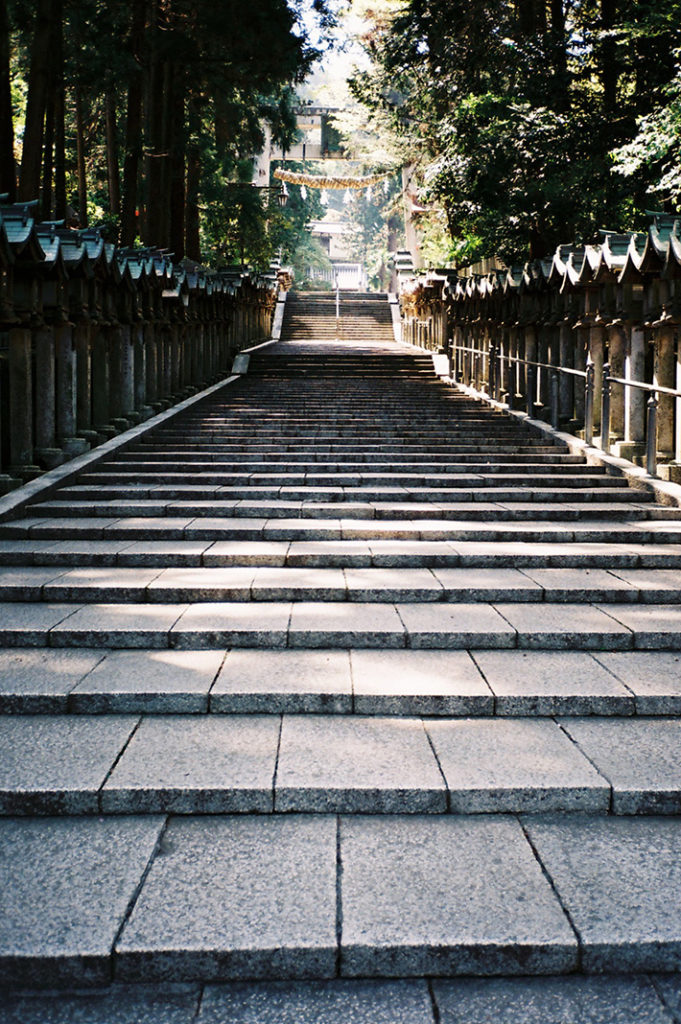
Prepare for a climb!
Hozan-ji temple itself sits spread across a courtyard in the shade of Mt. Ikoma’s rocky outcrops. Beneath the peak, the open space contains multiple Buddhist monuments and statues, including a prayer hall, a hо̄tо̄ [宝塔, stupa] and a pond filled with glistening koi carp. Here, thick smoke billows from the enormous incense bowl in front of the prayer hall, catching the sunlight and making the temple grounds look almost otherworldly.
Beyond the courtyard, steps carved directly into the mountain ascend to an indeterminate point in the thick pine forest. Naturally, visitors are in for something of a climb. The path winds and meanders, curving past smaller temples that become progressively more ancient and ethereal in their appearance. Walking onwards, expect to pass countless statues of Jizo and Kan’non, moving ever deeper into a forest that seems entirely forgotten by humans.
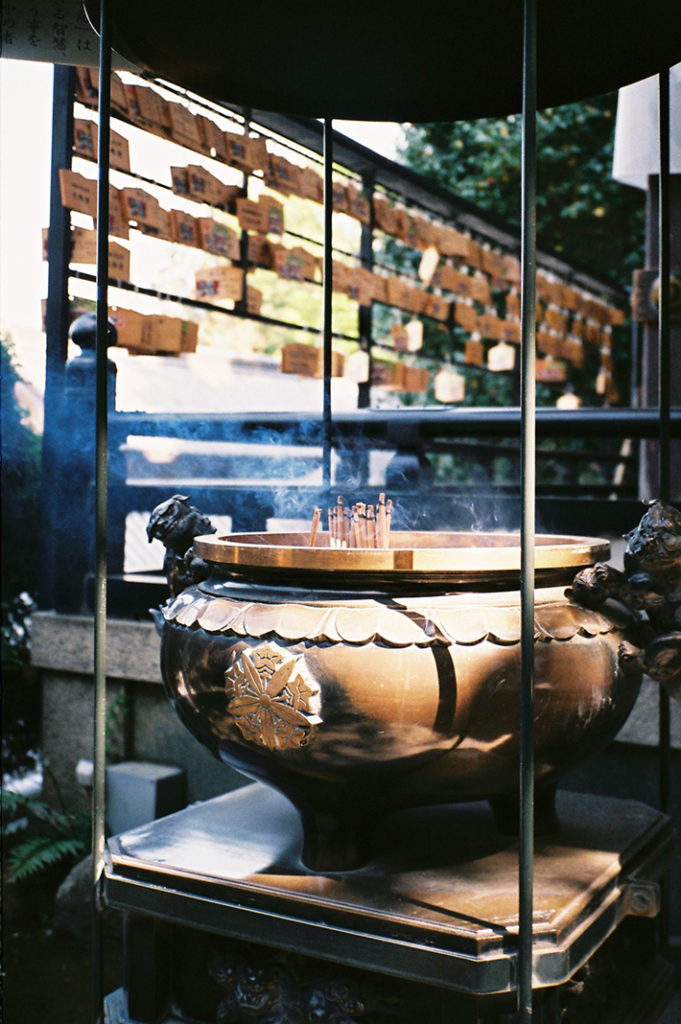
The Perfect Transition Into Nature.
Hozan-ji and its surrounding grounds are arguably at their most spectacular during the autumnal ‘red foliage’ season. Though, springtime brings an abundance of new life to the temple, too. Commonly, Japanese maples are planted around Buddhist temples, with cherry trees seen mostly in Shinto shrines. However, Mt. Ikoma has plenty of both and the temple itself features mountainside gardens lovingly tended by the resident monks. The steep ascent from the entry gate to the smaller hilltop temples makes for the perfect hiking journey, almost entirely divorced from signs of modernity.
One of the greatest joys that Japan’s mountain temples offer is a feeling of oneness with the natural world. Refreshingly, the buildings work with their natural environment, leaving visitors free to listen to the barely perceptible sounds of the forest or to watch afternoon sunlight play across wood and stone.
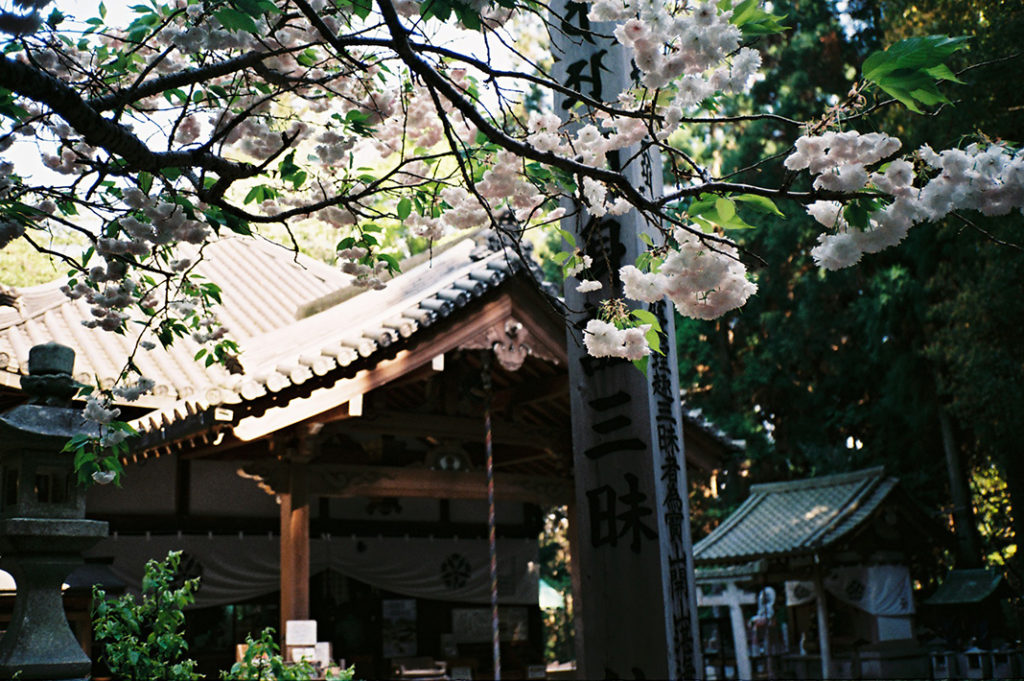
A chance to re-charge.
The uniquely serene combination of Buddhism and nature works in perfect harmony wherever it exists, from Tibet to Thailand. Naturally, Japan is no exception. Rising from temple to treetops along the mountainside stairway in Hozan-ji takes visitors from the sounds and smells of temple bells and incense to cicadas and cedar in a perfectly seamless way. The pathway leads past long avenues lined with weather-worn statues of Jizo and stone lanterns. Occasionally, you may even catch sight of a dancing stick bug. Tiny ‘Phasmeda‘ insects are abundant at the top of Mt. Ikoma. Naturally, watching them move to a track of your choice can provide endless entertainment.
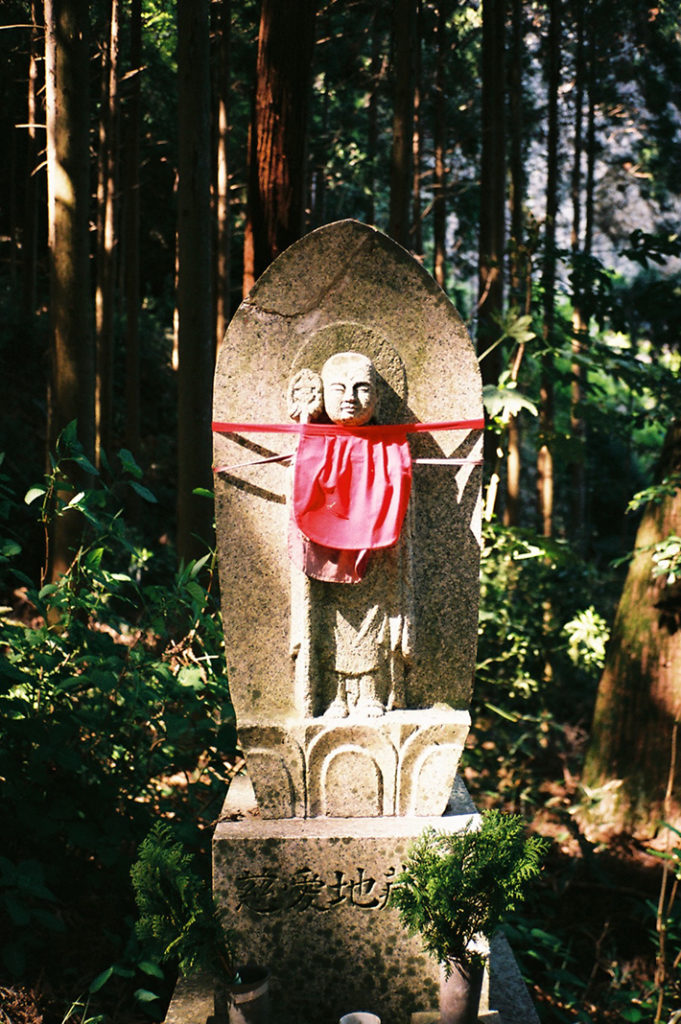
Access
Getting to Hozan-ji temple can appear daunting. However, the trip is well worth the effort and is only around 1 hour from central Osaka. In fact, you should consider setting aside a full day to enjoy not just Hozan-ji, but other parts of Ikoma. Better yet, if you leave early enough, you’ll have time to visit other parts of the mountain, including a very kid-centric mini-theme park!
First, get to Osaka Namba Station. The Kintetsu train company covers eastern Osaka and you only need to take one direct train from Osaka Namba to Ikoma Station. It’ll take around 50-60 minutes and cost ¥410. Ideally, aim for a Limited Express (orange/red) train, as it’s the fastest option and stops at Ikoma. From Ikoma station, walk one minute to the tiny ‘Tori-Mae‘ Cable Car Station. From here, purchase a cable car ticket for Hozan-ji station and ride one of the delightfully creepy animal-faced cable cars for five minutes until you reach your destination. Disembarking, follow the signposts to ‘宝山寺‘ (Ho-zan-ji).
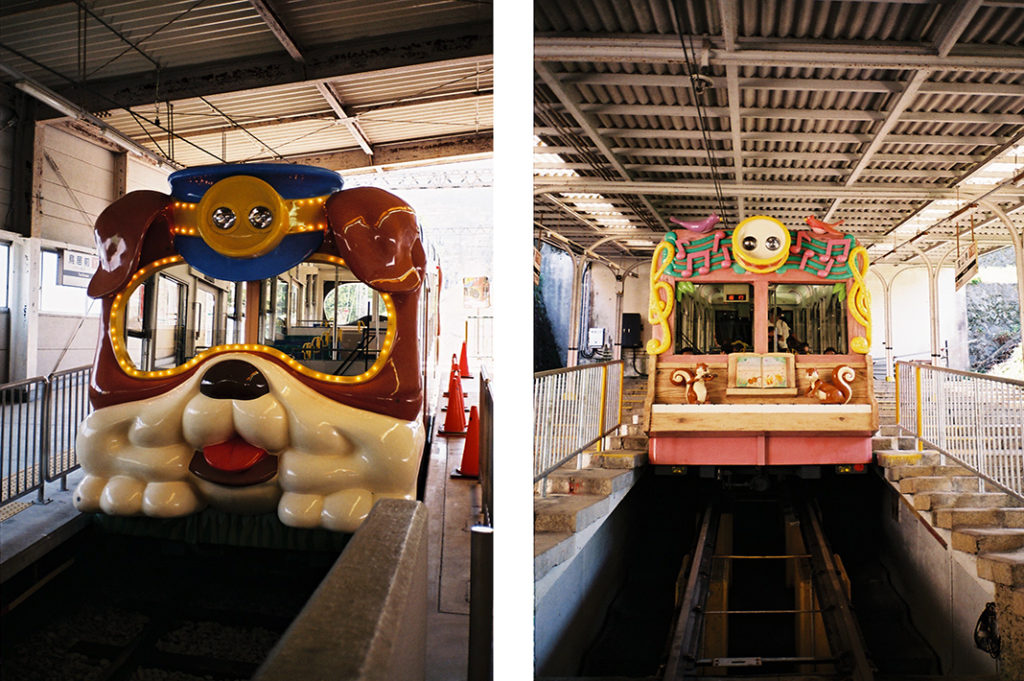
From the first courtyard of the temple to the peak of the mountain, expect to take about 1.5 hours at a leisurely pace. Finally, to top your perfect afternoon spent wandering the grounds of Hozan-ji, pay a visit to a nearby restaurant named Maharajaya, which can be found here. It’s an Asian-fusion restaurant with rich, dark wood interiors and a seated balcony that feels as though it overlooks the entire world. Crucially, from its prime location atop Mt Ikoma, the balcony faces west and overlooks the entire Nara basin. As such, it’s the perfect spot for dinner and, if weather permits, a sunset you’ll never forget.
Hozanji’s offical website (Japanese) is here.
Post by Japan Journeys.



